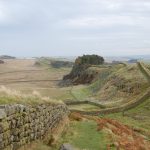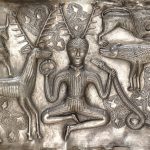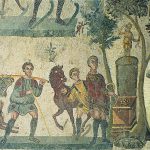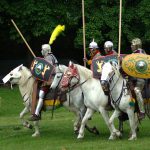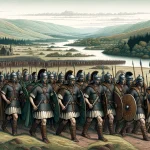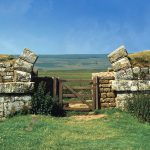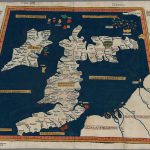Wigan (Coccium) Roman Settlement
Minor Settlement
Wigan is generally accepted as the site of the Roman settlement Coccium, a Roman camp or settlement which probably occupied land adjacent to the River Douglas. However, for a long time there was doubt over whether or not Wigan was actually the site of Roman ‘Coccium’ and, moreover, there was further confusion over the exact nature of the Roman presence in that was it a military camp alone, or was there a civilian settlement associated with it – neither option can be confirmed or denied. In the late 20th century the Greater Manchester Archaeological Unit discovered traces of 1st and 2nd century buildings on the site of the Wiend Centre. In addition, given the discovery of remains of the same period during the construction of the town’s gas works in the early 19th century, there is evidence to suggest that a quite sizeable settlement, or settlements, of some kind existed – possibly a Roman military station and a Brigantian civilian settlement side by side.
Classical References to Coccium (Wigan)
The classical evidence for this minor settlement is slight, with only a single entry in the Antonine Itinerary of the late second century. This document lists a road-station named Coccium, 20 miles from Bremetenacum (Ribchester, Lancashire) and 17 miles from Mancunium (Manchester, Greater Manchester). These distances match the location of the Wigan settlement quite well.
It is possible that the Roman name for Wigan is derived from the Latin word coccum (plural cocci) meaning ‘scarlet in colour, scarlet cloth’, less likely is a derivation from the Latin cocus (plural coci) meaning ‘cook, chef’; perhaps associated with the Gaelic word cocaire, which has the same meaning. So Coccium may mean ‘the [place of] scarlet [things]’ – which could be fields of poppies, a battlefield spattered with blood, or even a particularly notable brothel – or even ‘the [place of] the cooks’ or ‘the cook [house]’, perhaps indicating the presence of a particularly good guest-house or a well-run mansio. Much more likely, however, is the alternative that Coccium has some other derivation which I simply cannot guess.
Epigraphic evidence to Coccium (Wigan)
Epigraphic evidence for Wigan is also lacking with no inscriptions on stone mentioned in the R.I.B..
Although several coin hoards are reputed to have orignated from Wigan, on the Gas Works site, the Market Place and in Millgate, on the whole they are poorly recorded. The best source of information is the Powell Museum Catalogue which lists 9 coins, mostly copper, but with a Aureus of Vitellius (R.I.C. 2) and a silver sestertius? of Antoninus Pius. Other emperors represented in copper were Pius, Aurelian, Maximian (2), Constantine I, Constantius I and Crispus. Although these coin finds together with sporadic pieces of Roman pottery have been recorded over the years at Wigan (i.e. Watkin 1883), which had led antiquarians to voice the possibility of a settlement (Coccium) here, it was not until 1984 that R.B. structural evidence was unearthed (vid. TindallGtr. Man. Arch. Journ. I (1985) pp.25-34).” (Shotter)
Roman Coins from North-West England by David Shotter (Lancaster 1990) pp.40-41.
- In 1690 a hoard of over 200 coins was found by a farm labourer at Bolton Field, Standish. The coins dated from the reign of Domitian (AD 81-96) to that of Gordian III (AD 238-244), and were found in a bronze vessel together with an engraved ‘intaglio1, or gemstone, and two large gold rings (Leigh 1700,92-1 10; Watkin 1883,238).
- In 1926 a hoard of 137 silver coins (spanning the period AD 54-225) was found at Boar’s Head during the digging of foundations at Minerva House, Wigan Lane (Hawkes 1935,43).
- Other coin discoveries in Wigan have included a group of bronze coins of various emperors of the late 2nd to late 3rd century AD, found near the Market Place in 1837 (Watkin 1875-6, 69)”
- Probably the most celebrated discovery, however, was that of a gold aureus- of the Ernperor Vitellius (AD 69), found near the Mesnes in 1850.
Archaeological Findings at Coccium (Wigan)
In 2005, by far the most exciting Roman discoveries were made, when work on the Grand Arcade revealed extensive Roman remains in the Millgate area of the town. Subsequent investigation by Oxford Archaeology North uncovered a huge colonnaded building from the 2nd century AD. This was thought to be a Mansio – a Roman hotel. It contained a hypocaust and bath house. Close by was an earlier workshop with a series of hearths where lead was processed. Other Roman finds on the site include over 2,000 shards of pottery, much of it Samian ware, and 1.5 tons of building material.
Sites near Wigan (Coccium) Roman Settlement
- Wilderspool Roman Town (19 km)
Iron-work, Minor Settlement, Pottery and Temple Or Shrine - Walton Le Dale (23 km)
Major Settlement and Supply Depot - Manchester (Mamucio) Roman Fort (26 km)
Flavian Auxiliary Fort (AD 69–96) and Vicus - Margary 7 (27 km)
Roman Road - Ribchester (Bremetenacvm Veteranorvm) Roman Fort (30 km)
Flavian Auxiliary Fort (AD 69–96) and Vicus - Kirkham Roman Fort (31 km)
Flavian Auxiliary Fort (AD 69–96) - Manley Marching Camp (32 km)
Marching or Temporary Camp - Northwich (Condate) Roman Fort (33 km)
Flavian Auxiliary Fort (AD 69–96), Salt working and Vicus - Meols (34 km)
Port and Probable Settlement - Picton Temporary Camp (39 km)
Marching or Temporary Camp
